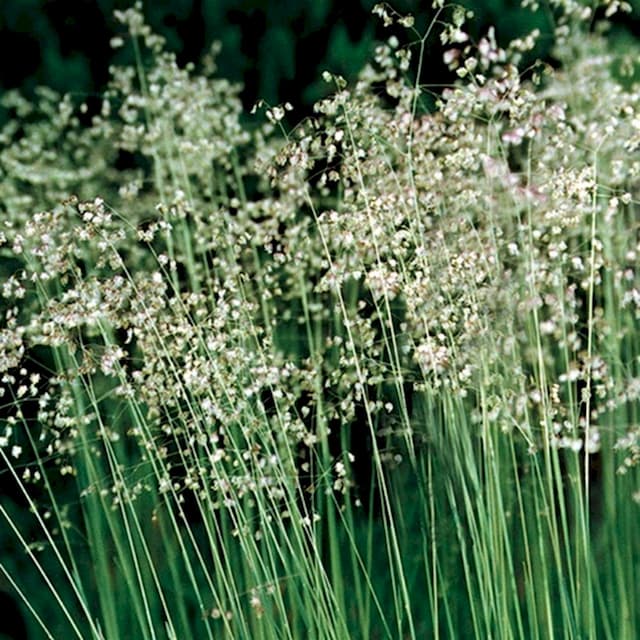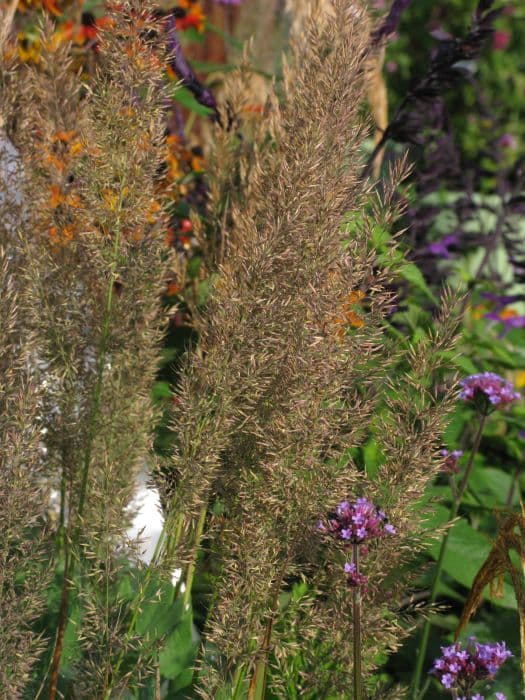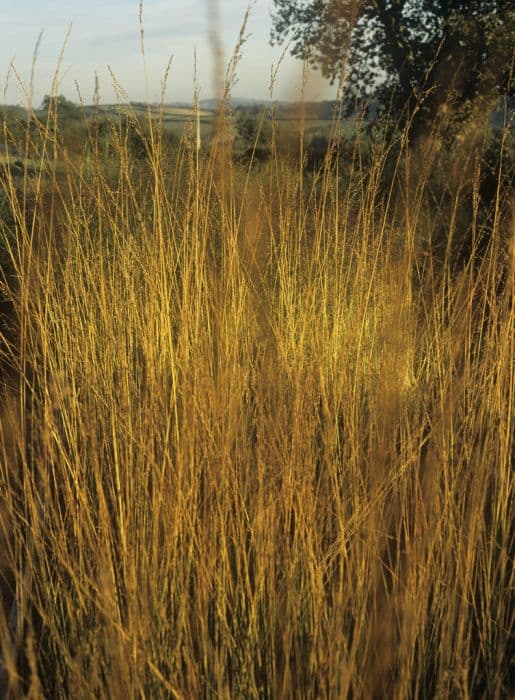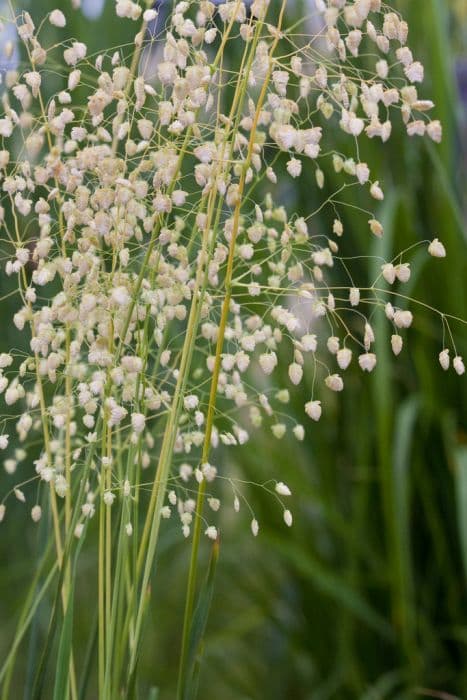Paper Bamboo Borinda papyrifera

ABOUT
Commonly known as the Blue Dragon bamboo or Chinese Blue Bamboo, Borinda papyrifera is a notably attractive species with a striking appearance. It features delicate, gracefully arching culms that display a unique bluish tinge. The culms are further adorned with a white powdery bloom which enhances their blue coloration. The plant's leaves are narrow and elongated, offering a lush and feathery visual appeal. The foliage is a rich shade of green, presenting a lovely contrast against the bamboo's blue stems. In the right conditions, Blue Dragon bamboo assumes a dense, clumping growth habit, and its elegant form creates a soft, weeping effect. It is a favorite among gardeners who wish to add a touch of the exotic to their landscapes, with its distinctly colorful canes and textured leaves contributing to its visual interest. The color of its canes can vary depending on exposure to sunlight, with the blue hue being more pronounced in brighter light conditions. The contrast of colors and textures makes the Blue Dragon bamboo a focal point in any garden setting where it’s planted.
About this plant
 Names
NamesFamily
Poaceae
Synonyms
Papyrifera Bamboo
Common names
Fargesia papyrifera.
 Toxicity
ToxicityTo humans
The plant commonly known as Borinda papyrifera is not widely recognized for its toxicity to humans. There is limited information available regarding its poisonous attributes, and it is not typically listed among the plants known for causing harm when ingested. As with any plant material, ingestion can potentially cause irritation or an allergic reaction in some individuals, but specific symptoms of poisoning relating to Borinda papyrifera have not been well-documented. However, it's always wise to err on the side of caution and avoid ingesting parts of plants that are not explicitly known to be edible.
To pets
Much like with humans, there is limited information on the toxicity of Borinda papyrifera, commonly known as Borinda papyrifera, to pets. It is not commonly listed as a toxic plant in databases that catalogue such information for the safety of pets. While the absence of documented toxicity is reassuring, pet owners should still prevent pets from ingesting plants indiscriminately. Any plant material can potentially cause gastrointestinal upset such as vomiting or diarrhea in pets, or more serious issues if an individual animal has a specific sensitivity or allergy. If you suspect your pet has ingested Borinda papyrifera and is exhibiting unusual symptoms, it is best to consult with a veterinarian.
 Characteristics
CharacteristicsLife cycle
Perennials
Foliage type
Evergreen
Color of leaves
Green
Height
12 feet [3.66 meters]
Spread
6 feet [1.83 meters]
Plant type
Bamboo
Hardiness zones
8
Native area
China
Benefits
 General Benefits
General Benefits- Landscape aesthetics: Blue bamboo adds unique color and form to gardens, providing an attractive aesthetic that can enhance the visual appeal of a landscape.
- Privacy screening: With its tall and dense growth habit, blue bamboo can serve as an effective natural screen that provides privacy in residential or commercial landscapes.
- Noise reduction: The dense foliage and culms of blue bamboo can help to absorb sound, making it useful for reducing noise pollution in urban and suburban settings.
- Erosion control: The extensive root system of blue bamboo helps to stabilize soil on slopes and riverbanks, reducing erosion and sediment runoff.
- Climate resilience: As a hardy bamboo species, blue bamboo can tolerate colder temperatures, making it suitable for growing in a variety of climates.
- Carbon sequestration: Like most plants, blue bamboo absorbs carbon dioxide during photosynthesis, making it beneficial for carbon sequestration efforts.
- Renewable resource: Blue bamboo grows quickly and can be harvested for sustainable materials used in construction, crafts, or as a renewable resource for various products.
 Medical Properties
Medical PropertiesThis plant is not used for medical purposes.
 Air-purifying Qualities
Air-purifying QualitiesThis plant is not specifically known for air purifying qualities.
 Other Uses
Other Uses- Sound Insulation: The dense growth habit of Borinda papyrifera can be used to create natural barriers that reduce noise pollution, making it valuable in urban gardens and landscapes near busy roads.
- Ink Production: The soot from burned Borinda papyrifera culms can be an ingredient in the making of traditional Chinese ink, known as 'India ink' in the West.
- Tool Handles: The strong and resilient canes of Borinda papyrifera are suitable for manufacturing handles for various tools and implements.
- Furniture Making: The wood of Borinda papyrifera can be used in furniture making, especially for creating lightweight, eco-friendly pieces.
- Culinary Uses: In some cultures, the shoots of Borinda papyrifera are consumed as a vegetable, although not as commonly as those of other bamboo species.
- Craft Materials: The canes of Borinda papyrifera can be split into strips and used in basketry, weaving, and other craft projects.
- Fishing Rods: The flexibility and strength of Borinda papyrifera make it a good candidate for making fishing rods.
- Musical Instruments: Some Asian cultures use bamboo to create musical instruments, and Borinda papyrifera's canes could be utilized in the construction of flutes or other wind instruments.
- Decorative Elements: Its ornamental appearance allows for Borinda papyrifera to be used in decorative designs and installations in gardens and parks.
- Walking Sticks: The sturdy culms of Borinda papyrifera can be fashioned into walking sticks or canes, combining functionality with natural aesthetics.
Interesting Facts
 Feng Shui
Feng ShuiThe plant Borinda papyrifera, commonly known as the Tibetan clumping bamboo, can be used in Feng Shui to attract positive chi and enhance the energy flow in the garden. It is believed to bring good fortune when placed in the east sector of a space for health or the southeast sector for wealth and abundance.
 Zodiac Sign Compitability
Zodiac Sign CompitabilityThe Tibetan clumping bamboo is not used in astrology practice.
 Plant Symbolism
Plant Symbolism- Flexibility: As a type of bamboo, Borinda papyrifera (commonly known as Clumping Mountain Bamboo) symbolizes flexibility due to its ability to bend with the wind without breaking, representing the capacity to adapt to changing circumstances.
- Strength: Bamboo is revered for its strength and resilience, which is shared by Clumping Mountain Bamboo, reflecting the ability to withstand challenges and pressures.
- Growth: Clumping Mountain Bamboo grows quickly and continuously, symbolizing rapid and persistent growth, both physically and in personal development.
- Peace: The gentle rustling of bamboo leaves is considered soothing, and as such, Clumping Mountain Bamboo is often associated with peace and tranquility.
- Good Fortune: Across many Asian cultures, bamboo represents good luck, and Clumping Mountain Bamboo is often included in this symbolism as a harbinger of good fortune and prosperity.
- Longevity: Due to its long life and hardiness, Clumping Mountain Bamboo represents longevity and the wish for a long, healthy life.
 Water
WaterTibetan clumping bamboo should be watered deeply to encourage root development, providing about 1 to 2 gallons of water per week, depending on the weather conditions. Young plants need more consistent moisture and should be watered several times a week, while established plants require less frequent watering. During the hot summer months, watering may be increased, especially for plants in containers. Ensure the soil is moist but not waterlogged, as standing water can lead to root rot.
 Light
LightTibetan clumping bamboo prefers bright, dappled sunlight but can also thrive in part shade. It should be placed in a location where it can receive morning sunlight and afternoon shade, especially in regions with hot summers. Too much direct sunlight can lead to leaf scorch, while too little light can lead to weak growth.
 Temperature
TemperatureThe ideal temperature range for Tibetan clumping bamboo is between 55°F and 75°F. It can survive minimum temperatures down to around 0°F once established, but young plants should be protected from severe frost. This bamboo is cold-hardy but performs best when not subjected to prolonged periods of extreme cold or heat.
 Pruning
PruningTibetan clumping bamboo should be pruned to remove any dead or weak canes and to maintain the desired shape and size. Pruning is best done in late winter or early spring before new growth starts. It is typically pruned once a year, but periodic thinning throughout the year can help maintain light and airflow within the clump.
 Cleaning
CleaningAs needed
 Soil
SoilTibetan Clumping Bamboo thrives in a well-draining soil mix with high organic matter. A blend of loam, compost, and perlite or sand works well, with a pH of around 6.0 to 6.5 being ideal for optimal growth.
 Repotting
RepottingTibetan Clumping Bamboo should be repotted every two to three years to refresh the soil and accommodate root growth. Younger plants may require more frequent repotting as they establish themselves.
 Humidity & Misting
Humidity & MistingTibetan Clumping Bamboo prefers moderate to high humidity levels, ideally between 40% to 60%, to mimic its natural environment and promote healthy growth.
 Suitable locations
Suitable locationsIndoor
Provide bright light and humidity for indoor Tibetan Clumping Bamboo.
Outdoor
Place Tibetan Clumping Bamboo in partial shade, protect from wind.
Hardiness zone
7b-9 USDA.
 Life cycle
Life cycleBorinda papyrifera, commonly known as clumping bamboo, begins its life cycle as a seed, which requires a warm, moist environment to germinate. After germination, the young bamboo shoot emerges from the soil and begins to grow both underground, developing a rhizome system, and above ground, producing culms (stems). These culms rapidly elongate and harden, photosynthesizing to provide energy for further growth. As the plant matures, it develops more culms and foliage, forming dense clumps characteristic of its non-invasive growth habit. Periodically, the bamboo will produce flowers, although this is an infrequent and often unpredictable event that can lead to the death of the particular flowering clump. After flowering, if the plant sets seed, it completes its reproductive cycle, though Borinda papyrifera usually propagates vegetatively through its rhizomes, allowing the plant to spread and persist in its environment.
 Propogation
PropogationPropogation time
Spring-Early Summer
The Borinda papyrifera, commonly known as the Blue Bamboo, is typically propagated through the division method. The optimal time for propagation is during the late winter or early spring when the plant's growth activity begins to pick up. To propagate Blue Bamboo by division, a mature clump of bamboo is carefully excavated, and sections of the rhizome with attached roots and at least one or more culms are separated. These sections should be planted immediately in well-drained soil and kept moist to encourage root development. New shoots usually appear within a few weeks to months, depending on the growing conditions and care provided.









